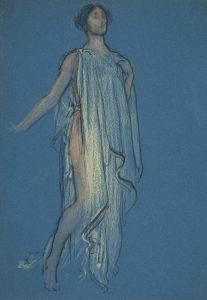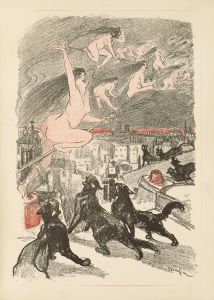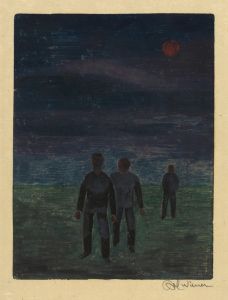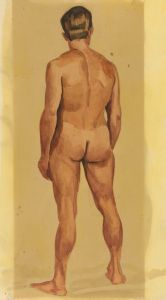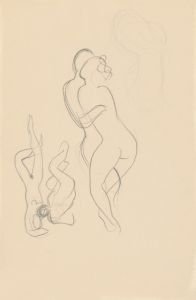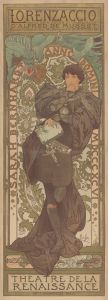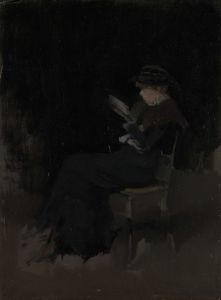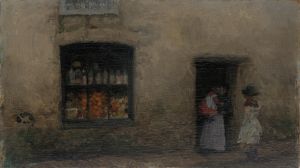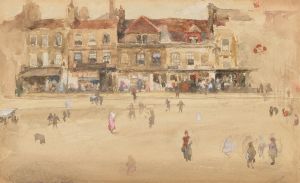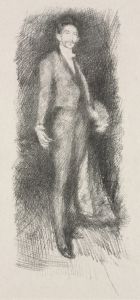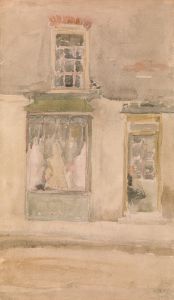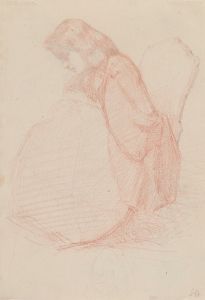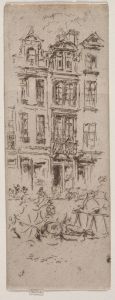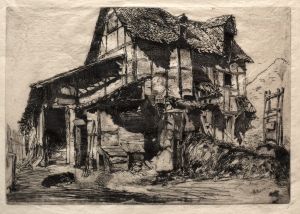
Arrangement in Black, No. 3, Sir Henry Irving as Philip II of Spain
A hand-painted replica of James Abbott McNeill Whistler’s masterpiece Arrangement in Black, No. 3, Sir Henry Irving as Philip II of Spain, meticulously crafted by professional artists to capture the true essence of the original. Each piece is created with museum-quality canvas and rare mineral pigments, carefully painted by experienced artists with delicate brushstrokes and rich, layered colors to perfectly recreate the texture of the original artwork. Unlike machine-printed reproductions, this hand-painted version brings the painting to life, infused with the artist’s emotions and skill in every stroke. Whether for personal collection or home decoration, it instantly elevates the artistic atmosphere of any space.
"Arrangement in Black, No. 3, Sir Henry Irving as Philip II of Spain" is a painting by the American-born artist James Abbott McNeill Whistler, created in 1876. Whistler, known for his innovative approach to art and his role in the Aesthetic Movement, often titled his works using musical terms, emphasizing the harmonious arrangement of colors and forms over the subject matter itself. This painting is part of a series of works where Whistler explored the use of black and other subdued tones to create a sense of mood and atmosphere.
The subject of the painting, Sir Henry Irving, was a prominent English stage actor of the Victorian era, renowned for his Shakespearean roles and his influence on the development of modern theater. In this particular work, Irving is depicted in the role of Philip II of Spain, a character he portrayed in the play "Philip" by Sir Edward Bulwer-Lytton. The play, although not as well-known today, was part of Irving's repertoire and showcased his ability to embody complex historical figures.
Whistler's painting captures Irving in a contemplative pose, dressed in the elaborate costume of the Spanish monarch. The use of black and subtle gradations of gray and white highlights Whistler's skill in creating depth and texture without relying on vibrant colors. This restrained palette is characteristic of Whistler's "arrangements," where the focus is on the composition and tonal harmony rather than narrative detail.
The painting reflects Whistler's interest in the interplay between art and performance. By choosing to depict Irving in character, Whistler not only captures the likeness of the actor but also the essence of his theatrical presence. This duality is enhanced by the painting's composition, which isolates the figure against a dark, undefined background, drawing attention to Irving's expressive features and the intricate details of his costume.
"Arrangement in Black, No. 3" is part of Whistler's broader exploration of portraiture, where he sought to transcend traditional representations by emphasizing mood and abstraction. This approach aligns with the principles of the Aesthetic Movement, which advocated for "art for art's sake" and prioritized beauty and sensory experience over didactic content.
The painting is also a testament to Whistler's relationship with the theatrical world and his admiration for Irving's artistry. It exemplifies Whistler's ability to capture the spirit of his subjects while maintaining his distinctive artistic vision. The work is a significant example of Whistler's mature style, showcasing his mastery of tonal harmony and his innovative approach to portraiture.
Today, "Arrangement in Black, No. 3, Sir Henry Irving as Philip II of Spain" is recognized as an important work within Whistler's oeuvre, reflecting his contributions to the development of modern art. It is held in the collection of the Art Institute of Chicago, where it continues to be appreciated for its artistic merit and historical significance. The painting remains a compelling example of Whistler's ability to blend the worlds of art and theater, capturing the essence of a performance through the medium of paint.





